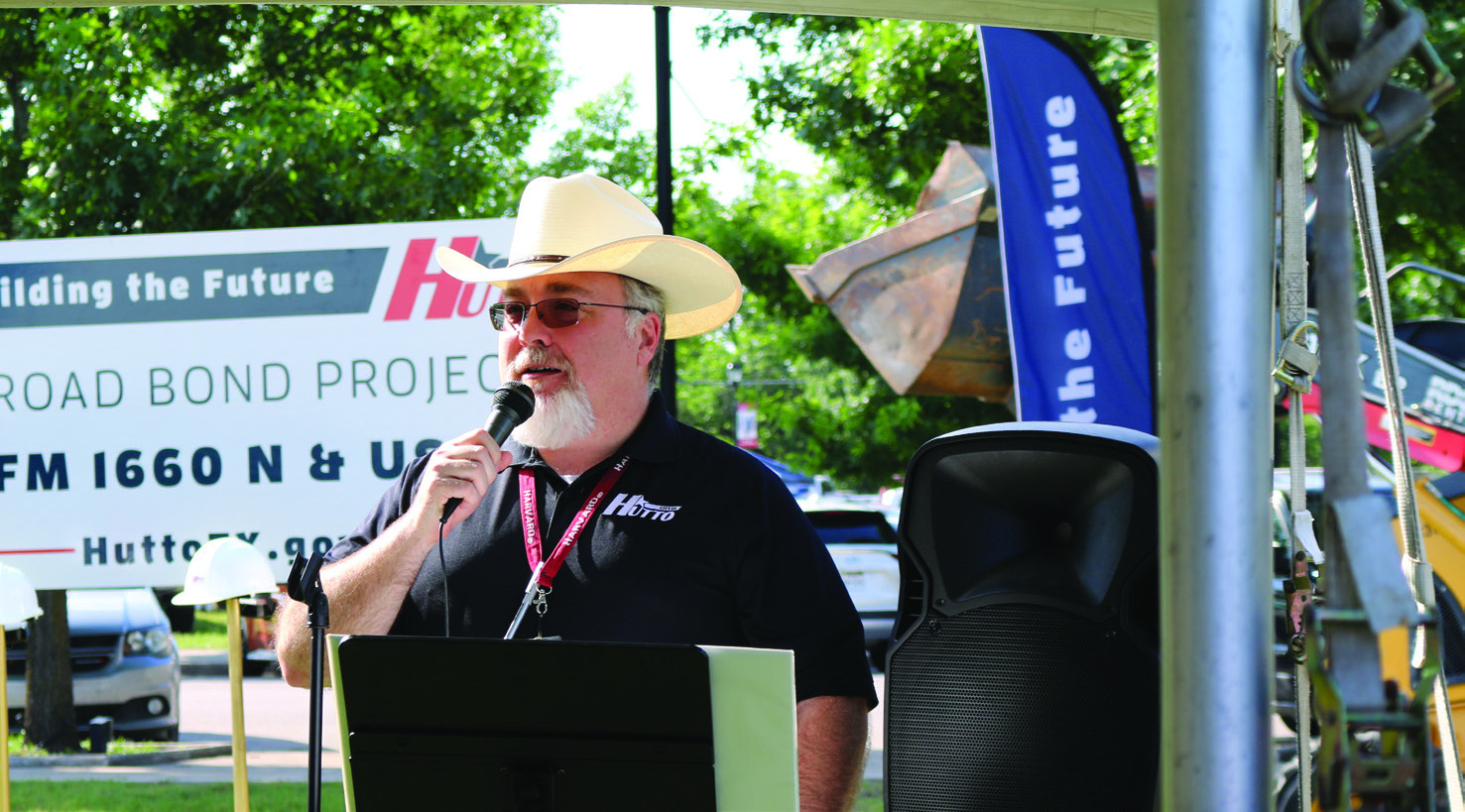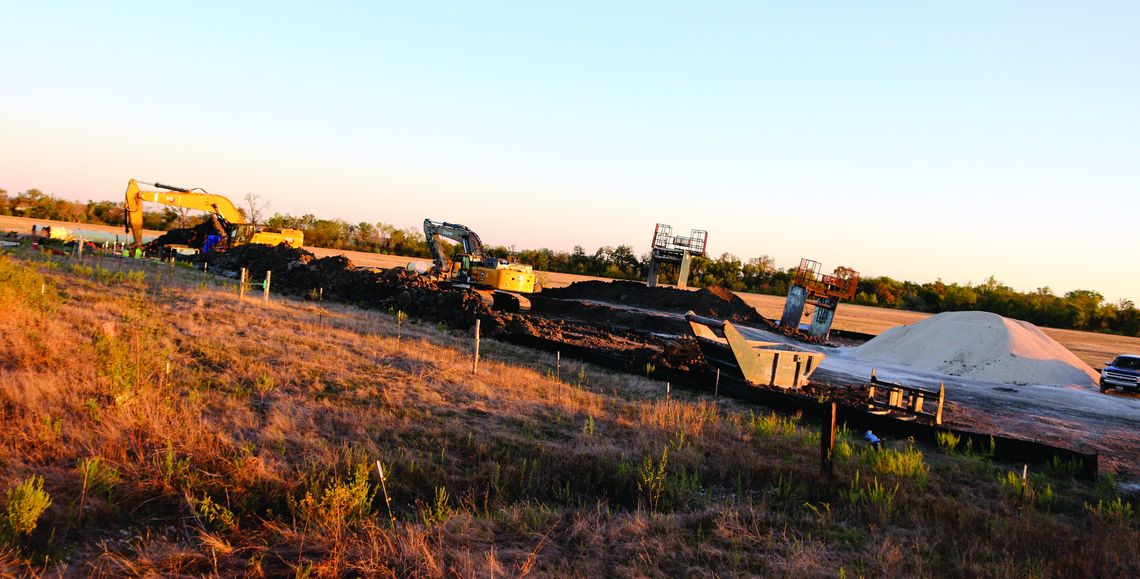The stars at night don’t shine quite as bright as they used to in east Williamson County.
The glaring lights of the Samsung Austin Semiconductor plant being built in Taylor can be seen from ten miles away, often blotting out the stars. And that glow on the horizon when you look toward Taylor symbolizes what many residents fear is the end of their small-town way of life in the greater footprint of ever-expanding Austin.
“It’s definitely different. I’ve really seen a lot of changes in terms of living here and making a living,” said Taylor homeowner Gale Samaroby.
The 30-year resident said Taylor is still a friendly and enjoyable town, and she has high hopes the city will maintain its character. However, she does see some inevitable changes.
“Comparatively, Taylor will be a small town a long time. But it will never be like it was,” she said. “It was simple. Uncongested. Friendly. Everybody knew everybody. They knew each other’s family history going back several generations. That will disappear, I think.”
“I understand the trepidation of the community changing,” said Tom Yantis, Taylor’s assistant city manager. “I don’t know that there’s a right or a wrong about growth. The important thing is that we have all the right policies in place to make sure that growth happens beneficially.”
Yantis refers to the city’s comprehensive growth and land use plans. The plans were updated in the last few years with community input, and the knowledge that Samsung would bring new possibilities and challenges to the city of just about 17,000 souls.
He mentioned affordable housing across all income spectrums as being a top priority, as well as mimicking the city’s historical neighborhood mixed-use characteristics.
“We have to make sure growth is beneficial to everyone, and that we maintain the characteristics that make Taylor what it is,” Yantis said.
And when, Samsung, the South Korea-based company announced that it was considering a plan to increase the size of the Taylor plant from a $17 billion factory to a $200 billion behemoth over the next 20 years, even some on Taylor’s City Council seemed taken aback.
“I don’t think from your 18 months of developing the comprehensive plan, you could have envisioned changes like that,” Councilman Dwayne Ariola told the consulting company that created the Envision Taylor comprehensive plan. The council had directed Austin-based Lionheart Places to review and reissue the plan in light of the potential astronomical growth of Samsung.
“Controlling growth is like saying, ‘If you put reins on a bull are you really controlling the bull or is the bull controlling you, and you just have a sense of control?’” said James Earp, Hutto’s city manager.
Earp believes while it is not necessary for a town to grow, and historically many towns have managed to remain small, it’s hard to push back against development when there is a strong economic force driving it.
“We have external pressures that are pushing growth,” Earp said. “So if you try to swim against that, and let’s just say tomorrow the City Council said, ‘We’re not going to issue another building permit from here forth. We’re not going to connect any more water or wastewater and we’re not going to build any more roads,’ that will not stop the growth.”
He cited 1970s Austin, when the city decided to limit growth by not building roads. The people still came, and the end result was extreme traffic congestion and a city critically behind in infrastructure. Highway engineers recently began planning a new, multibillion-dollar project to revamp Interstate 35 in downtown Austin.
Earp also said politics have an impact on growth, with the last two legislative sessions passing bills that favored developers over city rights.
“In my mind, the developer community using resources, using lobbyists, had some of the controls that cities had stripped away by the state in order to give them even more free reign and flexibility to do as they please,” Earp said. “Removing controls on building materials. Removing the ability for cities to annex property to bring them in to be able to do land-use controls. Those are two very big things.”
Between political pressure and economic forces, Earp doubts growth in Williamson County can be controlled, as much as some residents of small towns might hope otherwise.
“I don’t think you can control it. You can guide it. You can try to make it to where it negatively impacts the people you serve as little as possible,” Earp said. “The ways you do that is by being thoughtful about your infrastructure needs and doing your best in order to have development that’s going to occur anyway, help pay for portions of the infrastructure that is needed to serve those people, but also benefit people who are already here.”

Infrastructure is a big word in East Wilco, especially concerning roads and water. It’s generally the first major growing pain cities face, and especially in small towns, where there may not be enough unreserved money in the general fund to build a wastewater plant or something else that is vital.
In fast-growth towns such as Hutto and Taylor, transportation projects, water supply and wastewater-management issues dominate city council meetings. Whether it’s a capital-improvement project paid by a voter-approved bond or increases in city staffing paid by general fund property taxes, the topic spurs debate.
Infrastructure needs caused by development engender resentment when property owners see their tax bills rise, some officials said. And when it comes to big development, cities often give incentives to lure in companies.
Taylor agreed to rebate 92.5% of the property taxes Samsung will pay for the first 10 years. Hutto has made similar deals to bring in companies including Academy Sports and Outdoor.
Those incentives can leave taxpayers holding the bag and funding the city’s growth, with many long-time residents wondering whether they can afford to continue living in their hometowns.
“Academy won’t pay any sales or property tax for 10 years. What value does that give to Hutto? EVO (Entertainment Group opening in Hutto) also is not paying any sales or property tax for 10 years. We paid almost $10 million in roads, drainage, infrastructure,” Hutto Mayor Mike Snyder said.
Snyder, who is known to fight against giving incentives to developers, often finds himself on the losing end of those battles.
“We say we’re diversifying our tax base but the taxes those businesses pay don’t cover the debt service to get them here. It doesn’t cover the costs,” the mayor said. “I’ve politely argued with the mayors of neighboring towns asking them why they approve some of those deals. If we all band together and stop incentivizing and let Austin bring in the big companies, we’ll have a whole lot better economic climate and taxes.”
When development doesn’t pay its fair share, the burden falls on the residents.
East Wilco is rich with families that have five-generation ties to the land, as well as newcomers who seem to love Texas as much as any native.
Many made the choice to raise their families in small towns back when rural Texas was deemed one of the most affordable places to live. But as local cities have transitioned to industrial centers, locals have found it harder to live in them.
Hutto’s operational budget increased 150% over the previous year, and much of the bill lands squarely on the shoulders of residents. In addition, Hutto water utility customers are looking at a potential increase in their water bill up to $200 per month in the near future.
“It costs more to live in our neck of the woods than it did three years ago,” Snyder said. “I have people who stop by my house and ask, ‘How am I going to live here anymore?’ and I just say, ‘I don’t know.’” The smaller towns that haven’t benefited from much growth find themselves in a different situation. As the cost of living goes up, if there are no new businesses or new homes to add to the tax base, the larger cost of maintaining the government falls on the same core group of taxpayers and tax bills rise, according to analysts.
Does that mean small towns are also in danger of becoming unlivable due to expenses? Can small towns afford to stay small, or is that an unfeasible dream?
Earp thinks small towns are about more than size.
“Most people think of the small-town environment as a picture postcard but really what small-town environments were, was people knew people. You were either related or you knew them because you had gone to school together, grown up together, lived in the same community. It was just kind of a stasis. That’s not possible in the same way in the modern world,” he said.
The city manager believes that it’s still crucial for people to know their neighbors, and cities should invest heavily in community outreach to bring people together through events and activities.
“I think that’s super important in our modern society because what I have learned in my short time on this Earth is if people know the other person they are more likely to extend grace and mercy and forgiveness than if they don’t,” he said. “People act differently, and that, I think, is what small-town community actually is.”
WHAT PEOPLE SAY
Many in the community believe it’s already too late. A vocal minority regularly post on a “Taylor Against Samsung” social media group, with comments including:
- “Taylor is forever ruined by Samsung.”
- “Feeding us breadcrumbs until we are pushed out of town or are sickened from the toxic environment created by (the) factory.”
- “…The tsunami of growth this project is expected to generate is going to place a lot of stress and huge demands on providing city services; water, sewer, streets, police and fire protection, etc., over the next 30 years. Just who do you think is going to pay for all of that?”








Comment
Comments